Do you have a question about the SunSynk 8kW and is the answer not in the manual?
| Rated Power | 8kW |
|---|---|
| Max. DC Voltage | 500V |
| Number of MPPTs | 2 |
| Max Output Current | 35A |
| Max Efficiency | 97.6% |
| Battery Voltage | 48V |
| Max Charging Current | 190A |
| Max Discharging Current | 190A |
| Frequency | 50/60Hz |
| Max PV Input | 10400W |
| Operating Temperature | -25°C to 60°C |
| Protection Rating | IP65 |
| Max DC Input Voltage | 500V |
| Max Input Current | 22A |
| Nominal AC Voltage | 230V |
| Communication | RS485 |
| Protection | Overload Protection |
| Cooling | Fan |
Explains the term 'hybrid' in electrical engineering and its application.
Describes a basic hybrid inverter setup using an off-grid inverter and changeover switch.
Classifies hybrid inverters into low-frequency and high-frequency categories.
Details high-frequency inverters with changeover switches, common in car audio.
Describes high-frequency inverters with an added small battery charger function.
Covers multi-mode inverters, larger versions of charger inverters with more features.
Highlights AC coupled inverters, which operate similarly to On-Grid Inverters.
Discusses 'super inverters' that offer high power reverse/charge capability and reliability.
Identifies the 8.8kW bi-directional inverter as the central component of the Sunsynk system.
Explains how the inverter switches circuits using relays, with an important note on operation.
Emphasizes understanding inverter operation for correct wiring configurations and mentions the display's system flow.
Illustrates the system flow with combined MPPTs and explains prioritization options for load or battery.
Provides guidance on mounting the inverter securely and considerations for placement.
Discusses battery types, C-rating, and provides a guide for connection and safety.
Describes the initial screen displayed upon system boot, providing essential information.
Details various parameters like solar power, grid status, inverter performance, and load.
Provides a visual representation of the system's power flow, battery status, and distribution.
Allows selection of language, system settings, and configuration of battery type for the inverter.
Explains the 'On-Grid with no PV' mode for low-sunshine areas, focusing on energy storage.
Details the 'On-Grid with UPS' mode, covering single or dual inverter configurations and grid failure handling.
Guides on wiring generators, common issues, and programming for hybrid inverter systems.
Explains the auxiliary load function for diverting power to devices like water heaters or air conditioners.
Describes Peak Shaving as a technique to reduce power consumption during peak demand, saving money.
Discusses connecting and using wind turbines with the Sunsynk inverter, including necessary components.
Explains the necessity of earth bond for hybrid systems and how to connect the AC output to A/T/S.
Details connecting up to 16 inverters in a single-phase setup, emphasizing master/slave roles.
Explains paralleling inverters in a three-phase system, requiring three masters for phase rotation.
Describes the F13 fault related to changing system status while running, requiring load isolation.
Explains the F18 fault due to overload on the 'Load' terminal, often caused by many loads switching simultaneously.
Addresses F20 fault caused by battery issues or startup overloads, focusing on C-rating and connections.
Details F23 fault indicating earth leakage or transient issues on the AC side, requiring checks of cables and PV ground.
Explains F24 fault due to earth fault on solar panels or arrays, requiring isolation of the faulty component.
Describes F26 fault occurring in split-phase mode when L1 and L2 loads differ, potentially damaging IGBT.
Covers F29 fault indicating communication issues with parallel inverters, suggesting cable checks and resistor settings.
Details F35 error for the absence of AC grid power, requiring investigation into the AC supply.
Addresses F42 fault related to AC line low voltage, suggesting adjustments to grid voltage settings.
Discusses frequency-related faults (F47/F48) and recommends adjusting inverter frequency settings to match the grid.
Explains F56 fault related to low DC busbar voltage, indicating battery issues and recommending cable checks.
Details F63 fault caused by loose solar panel connections, posing a fire hazard, and requiring system shutdown.
Explains F64 fault due to IGBT over-temperature from blocked fans or poor ventilation, potentially damaging the inverter.





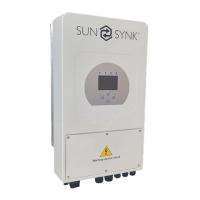
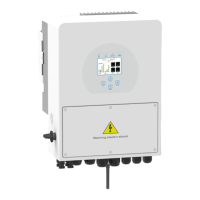

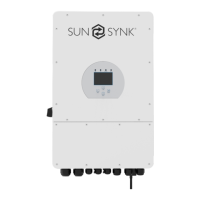

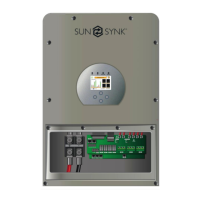
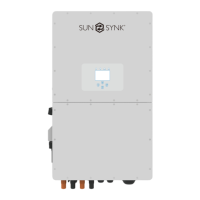
